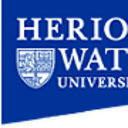Post-radioembolization yttrium-90 PET/CT - part 2: dose-response and tumor predictive dosimetry for resin microspheres.
Ключові слова
Анотація
BACKGROUND
Coincidence imaging of low-abundance yttrium-90 (90Y) internal pair production by positron emission tomography with integrated computed tomography (PET/CT) achieves high-resolution imaging of post-radioembolization microsphere biodistribution. Part 2 analyzes tumor and non-target tissue dose-response by 90Y PET quantification and evaluates the accuracy of tumor 99mTc macroaggregated albumin (MAA) single-photon emission computed tomography with integrated CT (SPECT/CT) predictive dosimetry.
METHODS
Retrospective dose quantification of 90Y resin microspheres was performed on the same 23-patient data set in part 1. Phantom studies were performed to assure quantitative accuracy of our time-of-flight lutetium-yttrium-oxyorthosilicate system. Dose-responses were analyzed using 90Y dose-volume histograms (DVHs) by PET voxel dosimetry or mean absorbed doses by Medical Internal Radiation Dose macrodosimetry, correlated to follow-up imaging or clinical findings. Intended tumor mean doses by predictive dosimetry were compared to doses by 90Y PET.
RESULTS
Phantom studies demonstrated near-perfect detector linearity and high tumor quantitative accuracy. For hepatocellular carcinomas, complete responses were generally achieved at D70 > 100 Gy (D70, minimum dose to 70% tumor volume), whereas incomplete responses were generally at D70 < 100 Gy; smaller tumors (<80 cm3) achieved D70 > 100 Gy more easily than larger tumors. There was complete response in a cholangiocarcinoma at D70 90 Gy and partial response in an adrenal gastrointestinal stromal tumor metastasis at D70 53 Gy. In two patients, a mean dose of 18 Gy to the stomach was asymptomatic, 49 Gy caused gastritis, 65 Gy caused ulceration, and 53 Gy caused duodenitis. In one patient, a bilateral kidney mean dose of 9 Gy (V20 8%) did not cause clinically relevant nephrotoxicity. Under near-ideal dosimetric conditions, there was excellent correlation between intended tumor mean doses by predictive dosimetry and those by 90Y PET, with a low median relative error of +3.8% (95% confidence interval, -1.2% to +13.2%).
CONCLUSIONS
Tumor and non-target tissue absorbed dose quantification by 90Y PET is accurate and yields radiobiologically meaningful dose-response information to guide adjuvant or mitigative action. Tumor 99mTc MAA SPECT/CT predictive dosimetry is feasible. 90Y DVHs may guide future techniques in predictive dosimetry.


